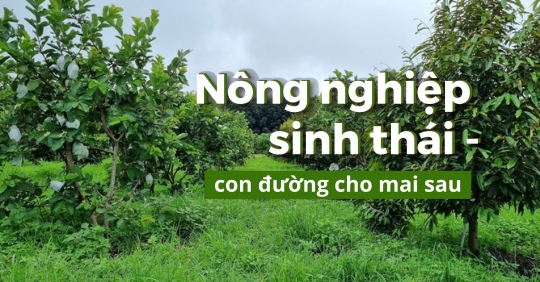The model of multiple farming on the same land, chosen by many people in Gia Lai Province, has brought many benefits. Accordingly, people have taken advantage of farmland by making optimal use of irrigation water, nutrients, fertilizers, etc. In particular, they have provided farmers with a stable source of income and reduced risks when prices are high. Some agricultural products have changed this done.
Mixed planting to avoid “putting all your eggs in one basket”
According to the introduction of the Ministry of Agriculture and Rural Development of Ia Grai District, we had the opportunity to meet old farmer Nguyen Van Quan (Village 7, Ia Kha Town, Ia Grai District) – one of the typical examples of crop species diversification . Locally valued plants.
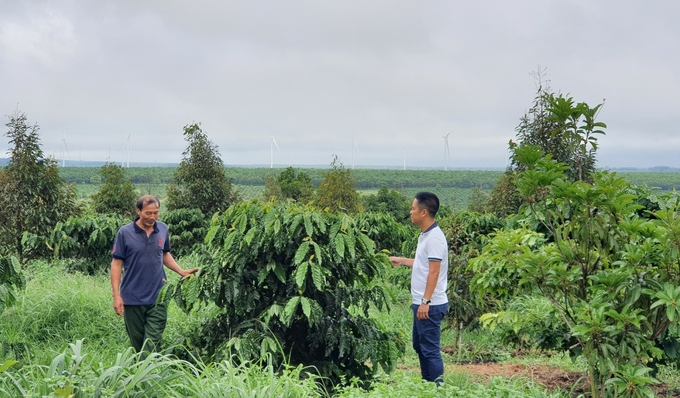
Mr. Quan’s multi-crop garden resembles an eco-tourism site. Picture: Tuan Anh
In Mr. Quan’s family garden, there are more than ten species of plants intertwined in a straight line. On the other side of the slope, the image of huge wind turbines paints the image of the garden even more vividly.
At first glance, Mr. Quan’s family’s 3-hectare garden looks like an eco-tourism site, with many tree species divided into many canopy layers. On a large space covered with blue sky, you can admire many species of trees such as jackfruit, durian, guava, rambutan, sapodilla, longan, etc.
While in the central highlands monocultures of only one plant species have been grown for a long time
In each hill garden, Mr. Quan chose his own path, which was to grow a “mixture” of many crops in the same area. When asked why he chose this form of polyculture, Mr. Quan said that he is a true farmer who is very interested in agriculture and production, and the space and value that the land carries with it bring to full advantage.
About 15 years ago, Mr. Quan’s family planted a rubber tree monoculture, but it had no effect. In 2018, he decided to improve the land for reclamation by planting fruit trees such as avocado, durian, rambutan, etc. and leaving the remaining vacant area to the family to grow coffee there for short-term cultivation.
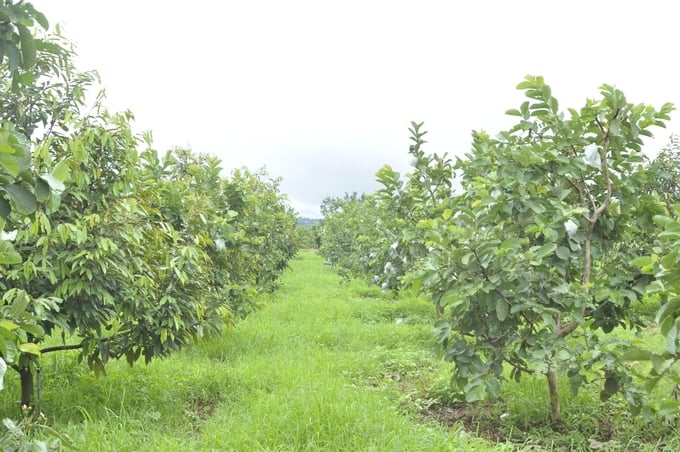
The multicultivation model is guided by many people in Gia Lai. Picture: Tuan Anh
“In the past, people only grew one species of tree per plot. When the price of the product dropped, the loss was great, even if there were natural disasters, pests and diseases, they were left empty-handed.” However, when growing compound crops, this fruit loses value, there are other fruits that do that balance, thus preventing a sell-off situation. In addition, the mixed cultivation with many kinds of fruit trees will also help to harvest products every season, generate a steady income and meet the regular needs of the market,” explained Mr. Quan.
After several years of ground construction, Mr. Quan’s family’s main source of income in the next season is expected to focus on more than 1,000 coffee trees, 350 durian trees, 100 guava trees, more than 100 sapodilla trees and several dozen trees. rambutan.
In contrast to the Chu Pah district, here too many households tend to give up monoculture and switch to mixed cultures with a variety of crops.
For more than two years, Mr. Nguyen Ngoc Bich’s family (Ia Mo Nong Township, Chu Pah District) has decided to demolish part of the old coffee-growing area and switch to growing fruit trees. Strolling through Mr. Bich’s family’s 6 acre garden, the lush green color of many of the fruit trees is teeming with life.
The plants are arranged and planted very methodically and scientifically. At the top is a fruit-laden passion fruit garden, with lush green durian trees in the center. Below are hundreds of tall avocado trees intertwined with coffee trees and sometimes bumping into guava, mango and jackfruit trees… which look very showy.
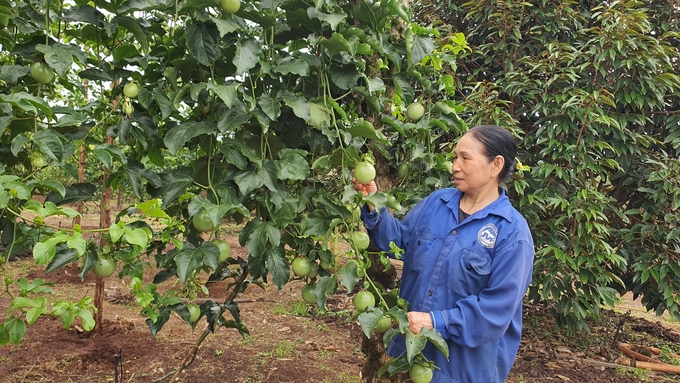
The garden is awake all year round and cool all year round thanks to the planting of many fruit trees by the Bich family. Picture: Tuan Anh
Mr. Bich cheerfully said, “Currently, 100 avocado trees have brought in revenue, an average of VND70-80 million in revenue per year.” During the last coffee harvest, Mr. Bich’s family now had more than 1,000 trees and harvested more than VND350 million. In particular, more than 1,000 passion fruit trees are about to be harvested, the expected yield is about 11 tons, the turnover is also nearly 100 million dong. Especially with 350 durian trees, divination will be the main source of income for the family next year.”
Mr. Le Van Thanh, director of Ia Mo Nong Agricultural Production, Trade, Service and Tourism Cooperative (Ia Mo Nong Township, Chu Pah District), said the trend of breaking monoculture and switching to polyculture is increasing. Chosen by many people. Multicrop cultivation helps stabilize people’s incomes and reduce market risks.
Vietnam’s consumer market is not stable, so monoculture farming is very risky for people. The lesson of falling pepper and passion fruit tree prices and crop failures is evidence that planting just one species of tree will be very risky. Hence, people are forced to plant many kinds of trees so that when that tree fails, other trees are left for income.
Plants support each other
In addition to reducing market risks, natural disasters, epidemics, multi-cultivation, multi-storey and multi-planting, they also help keep every garden green all year round, increase land cover, increase abundance and diversity. Biological environment, the ecological environment is improved, creating a natural balance and reducing the risk of pests and diseases that damage crops, reducing the use of pesticides much more than monocultures as before. This is the path followed by many people in Gia Lai.
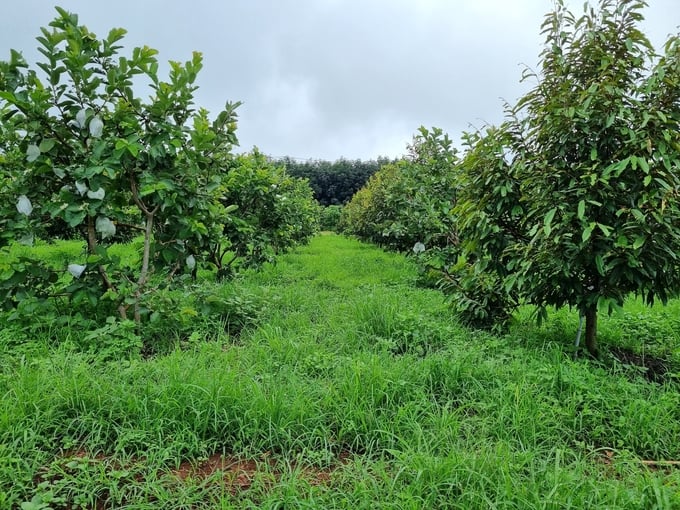
The multi-crop garden is managed organically so that the grass grows lushly to retain soil moisture, form organic biomass and prevent soil erosion. Picture: Tuan Anh
Mr. Nguyen Ngoc Bich (Ia Mo Nong Township, Chu Pah District) said that the family’s avocado and durian garden was planted towards VietGAP. Passion fruit is now also being grown organically and shipped to supermarket systems. In order to achieve this, all of the family’s catch crop farms almost completely dispense with the use of chemicals and mainly only use well-rotted manure.
In addition, to harmonize the ecological environment, the family garden allows for the natural growth of grass as vegetation to keep the soil moist in the dry season and prevent nutrient leaching in the rainy season. Grass also creates a favorable environment for the life of insects and beneficial soil microorganisms. The culture soil is therefore also porous and aerated, so that the plant roots can absorb the nutrients more easily.
Concerned about planting many tree species in the same area, which would result in depleting the soil’s nutrient source, Mr. Bich analyzed: “Before planting, the family selected plants that were suitable for the care system. Use the same water source.” and nutrients. In addition, the family grows vegetables in the short term to both increase their income, grow them in the short term and produce biomass to supplement the organic sources for the orchard, forming a closed loop process.
Similar to Mr. Bich’s family’s garden, old farmer Nguyen Van Quan (Village 7, Ia Kha Town, Ia Grai District) also selects a variety of plants to create a symbiosis. Trees depend on each other to grow. According to Mr. Quan, in addition to stable economic efficiency and reducing risks, multicrop cultivation also aims to create landscape and ecological environment.
Mr. Quan explained that like a durian monoculture, individual tubers are very difficult to grow without shade and moisture. So he had to plant more avocado, sapodilla, and coffee trees interspersed with durian “supports” to provide shade and keep each other moist.

Polyculture helps to reduce many risks in production while improving the ecological environment closer to nature. Picture: Tuan Anh
“People also used to pay little attention to treating the soil before planting, which led to pests and diseases. Therefore, polyculture helps plants support each other and reduces the risk of pests and diseases. “For example, planting guavas with durian helps repel harmful organisms,” Quan said.
In order to sustainably develop crops in the same space, Mr. Quan grows organically and lets the weeds grow lushly under the tree. According to him, this helps retain soil moisture and microflora, which allows the soil to better nourish plants. In addition, Mr. Quan mainly uses manure, buying livestock waste from households in the area and mixing it with fermented coffee husks to make microbial fertilizer for plants instead of using chemical fertilizers. This ensures that the nutrients in the soil are always available and that the plants grow well.
Mr. Hoang Thi Tho, deputy director of Gia Lai Province Agricultural Extension Center, analyzed that growing one crop is easier to maintain than growing multiple crops, and the yield of this crop will be larger in a monoculture. Single area versus polyculture. However, if people grow multiple crops but know how to arrange plants for many different canopy layers, this will also yield good results. In addition, multi-crop cultivation also contributes to better soil improvement, plants can use each other’s water and fertilizers, reduce investment costs, and improve soil and water quality, microorganisms and biodiversity. Bioform… enhanced.

